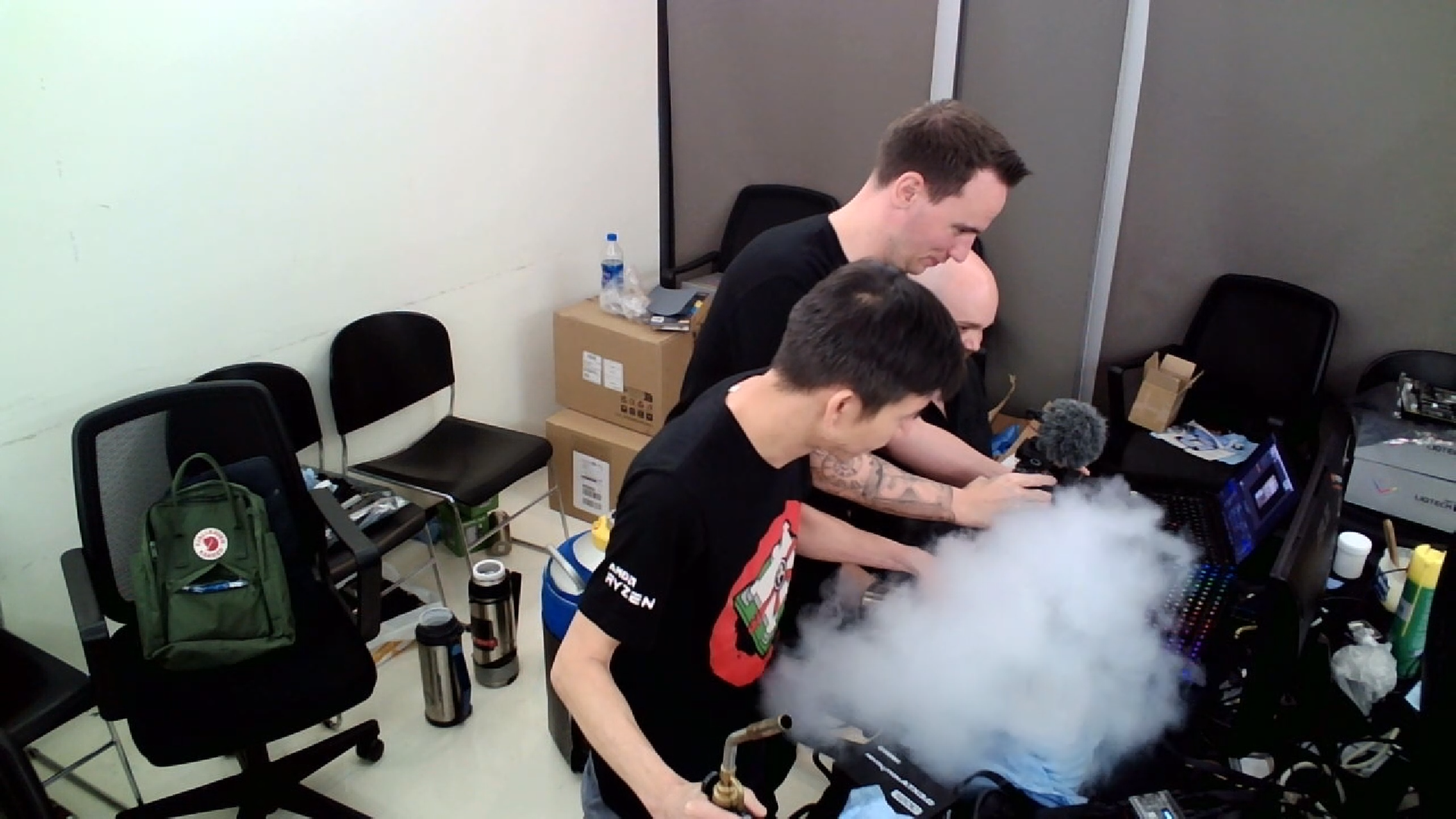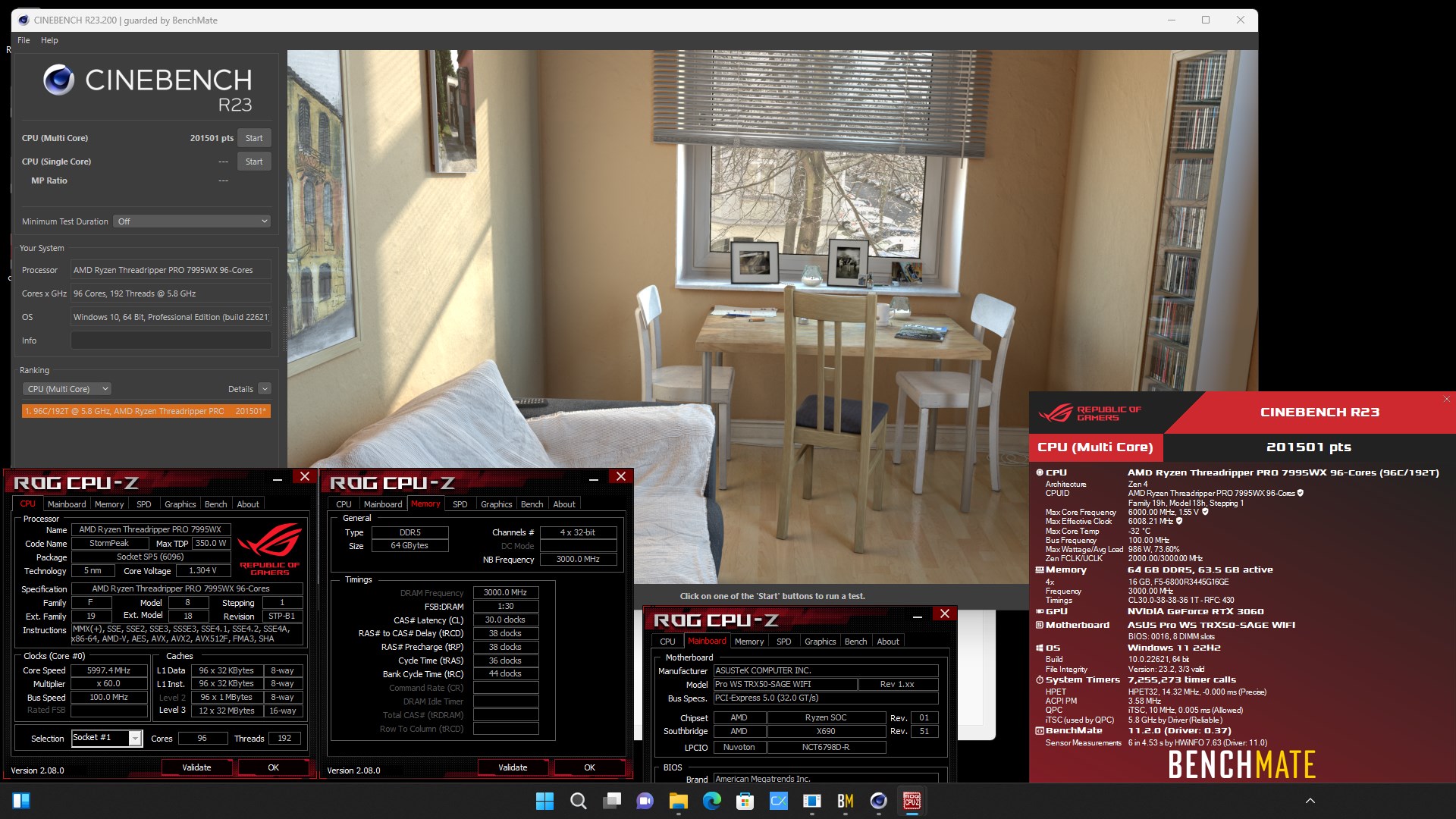
Along with its massive core count and extended memory support, AMD's Ryzen Threadripper Pro 7995WX has a rarely-used feature that makes it stand out in the workstation processor market: overclockability. Not many people buy a $10,000 CPU to overclock it, so AMD decided show how capable it is itself. Last week the company's lead overclocker Sampson managed to overclock the CPU to 4800 MHz and 5200 MHz using air and liquid cooling. But this week the CPU was able to hit 6.0 GHz with all 96 cores.
Experiments in overclocking AMD's Ryzen Threadripper Pro 7995WX processor using custom air and liquid cooling were conducted by Bill 'Sampson' Alverson. Extreme overclocking experiments using liquid nitrogen (LN2) were done by two teams — one composed of Bill 'Sampson' Alverson and Amit Mehra from AMD, and the other featuring renowned overclockers Roman 'der8auer' Hartung and Jon 'Elmor' Sandström.
The results are quite remarkable. Elmor and Der8auer experiments saw the CPU reach a whopping 6.0 GHz clock speed using liquid nitrogen. Sampson and Amit Mehra increased the frequency of all 96 cores in the AMD Ryzen Threadripper Pro 7995WX to an impressive 5,550 MHz frequency using LN2 cooling, surpassing his previous achievement with custom liquid cooling by 584 MHz.

At 5,550 MHz, AMD's Ryzen Threadripper Pro 7995WX scored 186,756 points in Cinebench R23, whereas at 6,000 MHz, the 96-core CPU scored 201,501 points, which is a considerable improvement from the 100,000 points scored at its standard clock speed.
AMD's Ryzen Threadripper Pro 7995WX operates at a 2.50 GHz base frequency using 350W. Reaching 4.80 GHz with air cooling and 6.0 GHz using liquid nitrogen is a major achievement. After all, if you cool a CPU down using a liquid with a −196 degrees Celsius (−320 degrees Fahrenheit) temperature, you can indeed get a remarkable result.
Meanwhile, the LN2 overclockers had to adjust memory configurations, reduce the number of DDR5 modules to two (from four) and lower data transfer rates to 3,000 MT/s (from 3,200 MT/s). A common practice in maximizing CPU overclocking potential, but this is something that is never used in real workstations. Speaking of workstations, we can only wonder whether any boutique PC maker attempts to build a factory-overclocked Ryzen Threadripper machine.







